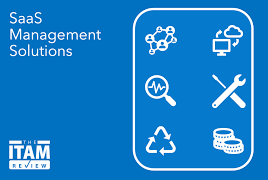
Sustainability is no longer a choice but a necessity. We see considerable investments in Sustainable Web Design practices across every sector, including IT. Organisations are moving their data centres to renewable energy sources, procuring energy-efficient equipment, and discarding old equipment without impacting the environment. While using the internet, most of us have never paused to consider its environmental impact. We believe the internet’s environmental impact is negligible compared to other industries such as automobiles, petrochemicals, mining, and others.
However, it is not the case. Countless studies have found that our digital activity considerably impacts the environment. The most notable impact is the increase in electricity consumption. As the world is yet to shift towards sustainable energy sources fully, high electricity consumption puts pressure on the governments to burn more fossil fuels. Another study shows that stay-at-home orders during the pandemic generated an additional demand of 42.6 million megawatt-hours, a 40% increase worldwide.
There are numerous ways to reduce the internet’s environmental impact. We will be focusing on sustainable web design practices. The reason is that we browse different websites whenever we access the internet. If the websites are designed keeping in mind sustainable practices, it will automatically reduce the internet’s environmental impact. Interestingly, many companies offering eCommerce development services in Toronto and elsewhere are now advertising sustainable web designs in their portfolios and marketing practices. They realise that sustainable web design is now a necessity.
Sustainable Web Design Practices
Sustainable web design revolves around the following factors:
⦁ Website Optimisation
When talking about optimisation, we don’t mean search engine optimisation (at least, not yet). Instead, we refer to performance optimisation. For example, how quickly does the website load? If a website takes too long to load, the user consumes too much energy. In contrast, a fast-loading website consumes less energy. Many companies specialising in web design in Toronto and elsewhere are now focused on delivering sustainability-oriented services. It is an innovative way of differentiating yourself from others.
⦁ Content Findability Sustainable Web Design
Suppose you are searching for jeans in an online clothing store. Unfortunately, the categories are not clearly defined. In other words, you must browse through multiple pages to find the desired project. When content findability becomes an issue, it affects the user experience. There is considerable research which shows that people close a website if they have trouble finding the desired information/product/service. Secondly, they are consuming electricity during the process.
⦁ Content Usefulness Sustainable Web Design
Content findability is only one aspect. Is the content useful? If not, it means the website visitor must continue their search. Google’s ‘Featured Snippet’ is also an attempt to address this issue. Different studies conclude that a post/page on Google’s featured snippet increases web traffic. In other words, featured snippets are useful.
⦁ Green Hosting Sustainable Web Design
It is the last element. Are your hosting providers running on green energy?
Based on these factors, let’s see how we can create a sustainable web design.
Creating Sustainable Web Designs – Top Tips with Examples
Here are the top tips:
⦁ Go for Green Hosting Sustainable Web Design
The first thing is to opt for green hosting providers. If you do a quick google search for hosting providers, you will notice that every hosting company claims to offer green services. While there is no way to determine whether they are telling the truth or it is a marketing gimmick, the least you can do is go through their website. It will tell you a lot about their green practices. For example, some engage in carbon offsetting, have robust asset disposal practices, or encourage working from home. Remember, there are multiple ways of going green. Green Geeks, a hosting provider, proudly displays its green credentials on its website.
⦁ Search Engine Optimization
The next thing to do is invest in search engine optimisation (SEO). Why? Well, we can’t stop users from doing searches. The only thing we can do is to give them the best link on the very top of search engine result pages (SERPs) to reduce their search time. It will help them find relevant information quickly. We do acknowledge that through SEO, your website will see an increase in traffic, leading to more resource consumption. However, as said earlier, we cannot stop users from doing searches.
⦁ Optimize Images
The next step is to optimise the images. If you don’t optimise the images, it will consume considerable power to load and host them. In other words, they contribute quite a lot to greenhouse gas emissions.
⦁ Fewer Images
Instead of relying on many images, we recommend minimising image usage. Google’s homepage is a perfect example of this. It uses no images but still manages to provide users with everything they require.
⦁ Optimize Videos
Google has been running on green energy for the past several years now. Therefore, we recommend opting for YouTube and embedding the video on your website if you want to upload videos. While there are exceptions, it is not recommended to upload videos directly to your website.
⦁ Use Content Delivery Networks (CDNs)
Opt for CDNs. Suppose your website is hosted in Canada. If a user from India wishes to access it, it will take longer to load, leading to higher energy consumption. With the help of CDNs, a copy of your website will be hosted on multiple servers globally. So, a user from India can access your website from the nearest server. It helps save energy.
⦁ Dark Mode
Another innovative yet simple way of improving a website’s sustainability is to offer a dark mode. Research shows that dark mode lowers battery consumption and reduces eye strain. Many websites now offer users to switch to dark modes. One example is the “ESPN Cric Info” website. The below screenshot shows the website’s dark mode functionality.
⦁ Sustainable Copywriting/Blogging
Avoid clickbait. It is harmful to the user experience and utilises more energy than required. Instead, answers question without beating around the bush.
Examples of Clickbait:
⦁ Click Here to Know…
⦁ What Happens When You…
⦁ You’ll Never Believe…
Conclusion
With the help of the above tips, you can create a sustainable website. As said earlier, many web design companies offer sustainable web design services. We recommend that you avail of their services for the best results.





